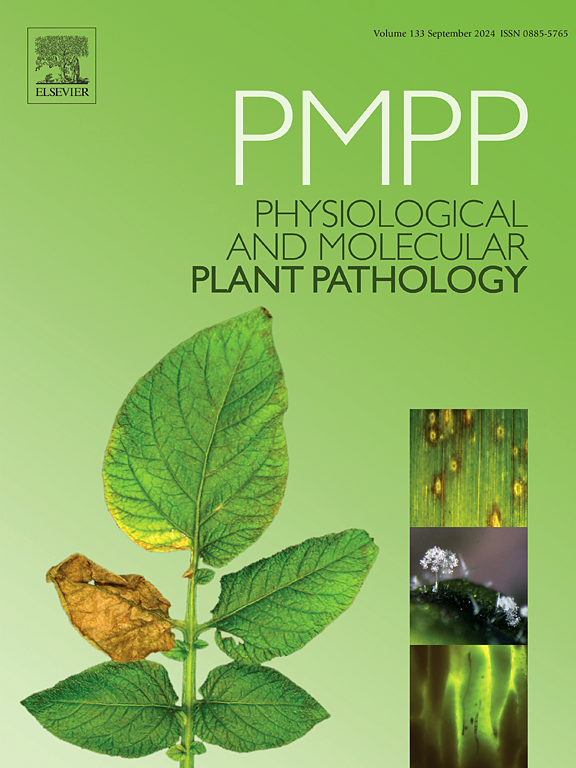Leveraging genetic diversity of aromatic rice landraces in Odisha for sustainable rice blast resistance
IF 2.8
3区 农林科学
Q2 PLANT SCIENCES
引用次数: 0
Abstract
Rice blast, caused by the fungal pathogen Magnaporthe oryzae, is one of the most destructive diseases affecting rice, leading to significant global yield losses. Investigation on genetic diversity and population structure of 108 aromatic rice (Oryza sativa L.) landraces from Odisha, India were made using a set of 20 major blast resistance (R) genes. Phenotypic evaluation classified these landraces into resistant (17 landraces), moderately resistant (17 landraces), and susceptible (74 landraces) groups based on their disease response. The frequency of the 20 R genes across the landraces varied widely, ranging from 2.78 % to 100 %, with each landrace carrying 7 to 18 positive R-gene alleles. In population structure analysis, two sub-populations (K = 2) were found with considerable admixture. Principal coordinate analysis (PCoA) further demonstrated distinct clustering patterns, separating the resistant and moderately resistant landraces. Molecular variance analysis (AMOVA) indicated that the majority of genetic diversity (57 %) was found within populations, while a smaller proportion (6 %) occurred between populations. Among the eight significant markers identified, YL155/YL87 (Pita gene, R2 = 7.8 %), Pita3 (R2 = 5.1 %), and Pikh (Pi54 gene, R2 = 4.0 %) exhibited the strongest associations with blast resistance, highlighting their potential for marker-assisted selection in breeding programs.
求助全文
约1分钟内获得全文
求助全文
来源期刊
CiteScore
4.30
自引率
7.40%
发文量
130
审稿时长
38 days
期刊介绍:
Physiological and Molecular Plant Pathology provides an International forum for original research papers, reviews, and commentaries on all aspects of the molecular biology, biochemistry, physiology, histology and cytology, genetics and evolution of plant-microbe interactions.
Papers on all kinds of infective pathogen, including viruses, prokaryotes, fungi, and nematodes, as well as mutualistic organisms such as Rhizobium and mycorrhyzal fungi, are acceptable as long as they have a bearing on the interaction between pathogen and plant.

 求助内容:
求助内容: 应助结果提醒方式:
应助结果提醒方式:


